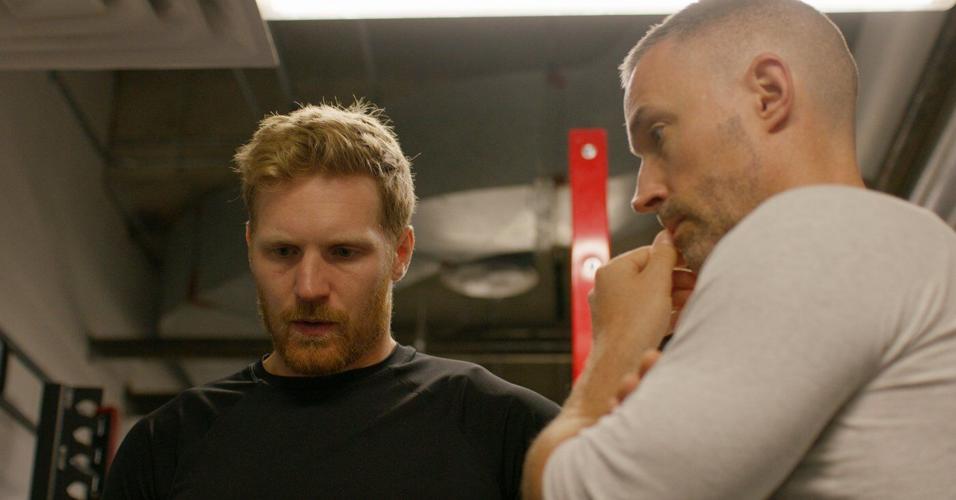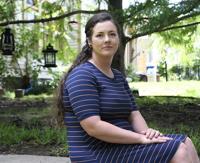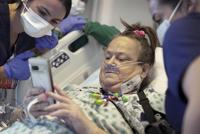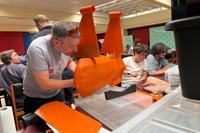CALGARY - In the spring of 2024, Colorado Avalanche captain Gabriel Landeskog hobbled into the University of Calgary's Integrative Neuromuscular Sport Performance Lab to try and resume his NHL career.
He hadn't played an NHL game since June 26, 2022, when he and the Avalanche hoisted the Stanley Cup above their heads after a Game 6 win over the Tampa Bay Lightning. But behind that triumph was Landeskog's deteriorating knee.Â
Landeskog underwent cartilage replacement surgery in the spring of 2023 after a season on the sidelines. It was his fourth surgery after a skate sliced his right kneecap during the 2020 playoff bubble in Edmonton.
His rehabilitation after cartilage replacement was one step up, two steps back.Â
"He was really struggling, and the main issue was he had made a couple of attempts at this point to get back on the ice and both times had been really affected by a flare-up in his knee," said Dr. Matthew Jordan, who is an assistant kinesiology professor and the sport performance lab's lead researcher in muscle strength and power.
"He's got a lot of poise. It's one of the words I used to describe Gabe, but I could tell he was worried, and I could tell that he was concerned about how he was going to salvage his career. He had a long, long way to go to rebuild to get back to playing an NHL game."
Landeskog and Jordan connected through University of Calgary alum Marcin Goszczynski, a strength and conditioning coach and massage therapist for elite athletes who will serve as Canada’s therapist in Olympic men’s hockey in February.
Landeskog met with Goszczynski and Jordan in Calgary in early 2024 to discuss a possible path forward, returning to the University of Calgary about half a dozen times afterward for testing.
"There are days when you wonder if you’re done playing this game, and that’s when it starts getting difficult because it’s the only thing you’ve ever done," Landeskog said. "I had a paper route as a kid and did some other odd jobs, but it was always hockey."
The 32-year-old Swede, once the NHL’s youngest captain at 19, was running out of options.
"It was proving itself to be very difficult of a journey," Landeskog said. "I didn’t know what the ending was going to look like. I was stubborn and not giving up."
Technology co-developed by Jordan became central to Landeskog’s rehabilitation.
Jordan is the scientific adviser to Vancouver-based Plantiga, which developed an insole with a sensor that Landeskog placed in both his skate boots and street shoes.
Microchips in the insoles measured his biomechanics, detecting subtle limps that signalled regression and warned when he needed to ease his workload.
Putting out a fire while it's still a wisp of smoke instead of a five-alarm blaze was Jordan's analogy.Â
Landeskog was monitored not just in the gym and on the ice, but also while walking his dog or heading to his car. He’d drop the microchips from his insoles into a docking station to upload the data to the cloud.
Jordan could see on a dashboard how Landeskog's gait responded to increasing workloads.
"We could literally pick up the subtle changes in how Gabe's walk patterns were ebbing and flowing," Jordan explained.Â
"A little red light would flash up in his dashboard, and it would say, 'Hey, Gabe is in a red-light zone right now where his movement patterns have changed. It's time to stop and let his body recover and repair.'"
Landeskog eventually learned to trust the data.
"The athlete in us just wants to go, go, go and wants to compete, get back and keep pushing, so the data was good sometimes to pull in the reins a little bit," he said.
"You can trick yourself into thinking you’re feeling pretty good. At the end of the day, I was playing the long game and thankful that we did."
Landeskog tested his knee in a pair of American Hockey League games last spring before making his NHL return in Game 1 of Colorado's first-round playoff series against the Dallas Stars, which Jordan attended.
"Man, it was electric right when they announced his number," Jordan recalled. "To see his wife and his kids in the corner ... knowing the journey he'd been on, just felt a lot of gratitude for being able to see an outcome that's positive. He looked great out there."
The Avalanche were eliminated in seven games, but the silver lining for the captain was that he'd successfully returned to the NHL. Landeskog averaged almost 14 minutes per game in Colorado's first 16 this season, and continues to get feedback from his insoles.
"Yep, they’re here," he said. "Honestly, they are the lifesaver for me in terms of my training and rehab. The data we get from them has been so instrumental. We’ve been able to see patterns and see asymmetries between my right leg and left leg before things even start bothering me.Â
"The sensors themselves are very forefront in technology, especially when it comes to athletes and return to play from injury. That will be a huge asset for teams moving forward in all kinds of sports, to be able to use technology like that."
— With files from John Korobanik in Edmonton.
This report by ºÃÉ«tvwas first published Nov. 11, 2025.


















































